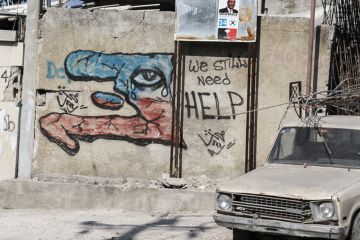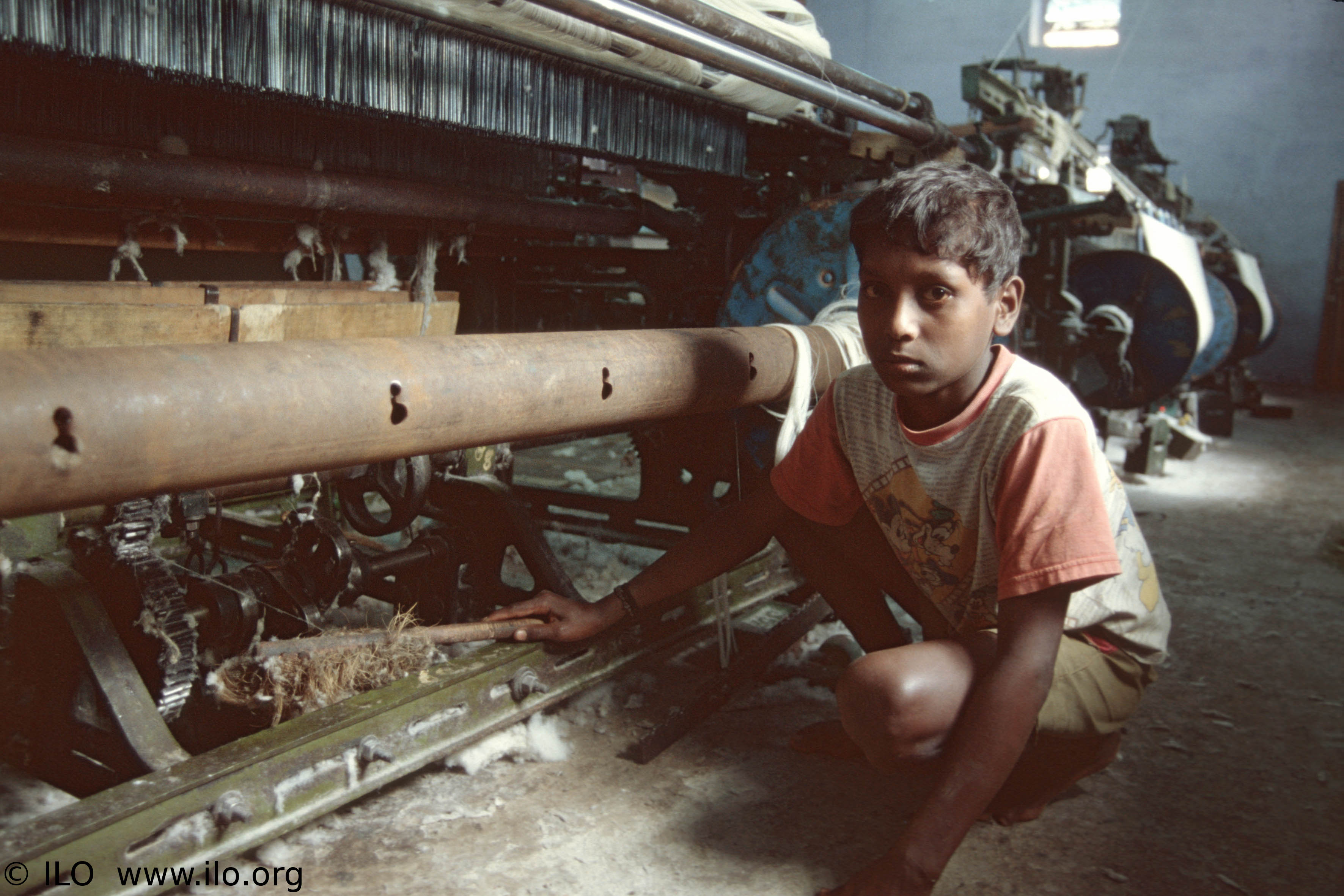“Rack city bitch, rack rack city bitch”. You have heard it all summer on the radio, on TV. We may have thought the age of aggressive rap was on its way out, but violence in the music industry is still very much alive.
The United States presidential elections once again brought to light the city of Chicago, President Barack Obama’s turf. Chicago is the most violent city in the United States, with the highest criminality rates in the country. Chicago’s South Side, the city’s rougher neighborhood, is notorious for its violence and is known to be the most dangerous area of the city, the everyday life of the ghetto is translated into an independent aggressive form of rap. What is particularly striking about Chicago’s rap is how young its writers and performers are: most of them are twenty years old or younger.
Violence is not only prevalent in these suggestive rap song lyrics, but it is also a reality in everyday life. Daily aggressions, murders, and crimes, such as the murder of sixteen year old rapper, Lil’ Jojo, shot in a gang fight earlier this September, is not an uncommon phenomenon in South Side. Scholar Jackson Katz comments “We are taught as black men that we should be expected to die”. Also, according to one of Lil’ Jojo’s friends, “Here, real niggers don’t get killed, they get assassinated. We can’t say he dies because of music you know; that was his lifestyle”. A strong link can be drawn between the desensitization of youth in front of death and violence, and gangster rap culture. As ABC News stated after the event, “Music stars are caught in the crossbar between gangster rap and true life gangbanger reality”
On Nov. 8th, Cinema Politica McGill showed the documentary “Hip-Hop: Beyond Beats and Rhymes”, directed in 2006 by Byron Hurt. Though a little outdated for our modern audience, the issues that the director tackles still remain relevant today. The film provides an insightful approach to the representation of manhood, women, and homosexuality in Hip-Hop Rap culture. Far from being an unreserved critic of the Hip-Hop music genre, the director challenges enduring stereotypes in the Hip-Hop and gangster rap music industry.
“America is a very hypermasculine, hyperaggressive nation”, filmmaker Byron Hurt claims. Historically, guns have been metaphors for masculinity. Violence in the US is not a result of black youth from the ghettos, it is prevalent throughout the world. The author, teacher and radio host Michael Dyson says, “When you think about American society, the notion of violent masculinity is at the heart of American identity”. Scholar Jelani Hobb adds, “Hip-hop perpetuates the mindset that the only way to affirm your manhood as a Black man, as a Latino man is to be hard, to denigrate women, to denigrate homosexuals, to denigrate each other, to kill each other”. Violence, misogyny, and sexual discrimination are omnipresent in mainstream culture references and marketing strategies (i.e. advertisements, films, songs, political speeches etc). From the War of independence in the United States, followed by the all-American cowboy in Western movies, to the latest Warner Brothers’ 2012 Batman movie “The Dark Knight Rises”, violence and aggressive behavior have become “an enduring symbol of American manhood itself”.
Hip-hop culture and music was born in the South Bronx ghettoes of New York City, an impoverished part of the city whose inhabitants, mainly Hispanic or African Americans, lived on the margin of society. Dance and music became a way for the youth of these marginalized neighborhoods to distance themselves, but also to convey the violence, the guns, and the poverty. The hypermasculinity and aggression were means for survival. In the documentary, violence educator Jackson Katz says, “I think that’s one of the things that accounts for a lot of the hypermasculine posturing by a lot of young men of color and a lot of working class white guys as well. Men who have more power, men who have financial power and workplace authority and form of abstract power like that don’t have to be as physically powerful because they can exert their power in other ways”.
In Beyond Beats and Rhymes, author Kevin Powell says, “We live in a society where manhood is all about conquering and violence”. Objectification of women is not only a product of rap culture, objectified female bodies are everywhere, advertisements, movies, videos, etc. The oversexualized woman has become normalized. As the director of the movie says, “Some people say that it’s just boys being boys, but I think it has a lot to do with boys figuring out early that girls are there for us to sexually objectify or to be our sexual playthings”. For scholar Jelani Cobb, sexist music videos represent “a view of women […] that’s not radically different from the views of nineteenth century white slave holders”.
“We’re in this box, and in order to be in that box, you have to be strong, you have to be tough, you have to have a lot of girls, you gotta have money, you have to be a player or a pimp, know you gotta be in control, you have to dominate other man, other people, you know if you are not any of those things, then you know people call you soft or weak or a pussy or a chump or a faggot and nobody wants to be any of those things. So everybody stays inside the box”, says Byron Hurt.
Homophobia is another issue that comes up in rap music and hip-hop culture. The tendency of “dissing” other men as “less than a man […] assigning the very derogatory terms that one usually associates with women” (Michael Dyson), is widespread practice in politics and many other domains. In hip-hop culture, it is not uncommon to call other men “bitch niggas”. In politics, California Governor Arnold Schwarzenegger, famous for his muscles and all-American look, demeaned his opponents calling them “economic girlie men”.
Jelani Cobb explains that homophobia is based on an insecurity about one’s manhood: “It’s calling your manhood into question, it’s calling your sexuality into question, it’s saying that if you are not this you must therefore be gay, you must be gay, you must be a faggot, you know you much be a bitch nigga”. Homosexuality is a very closed off topic in the hip-hop world, an issue that many refuse to openly talk about. When Byron Hurt interviewed the rapper Busta Rhymes explained: “I can’t partake in that conversation. With all due respect, I ain’t trying to offend nobody. What I represent culturally doesn’t condone [homosexuality] whatsoever”.
Yet, in rap culture, it seems that homophobia, homoeroticism, hypermasculinity, hyperaggressivity go hand in hand. The friendship and fraternity between “homeboys” bond men. “In rap, men talk about their sexual conquests, ‘Me and my boy hit it’. There’s a lot of ‘me and my boy’ in there, not much about the woman, but ‘me and my boy’, says scholar Michael Dyson.
Album covers, posters, and magazines clearly illustrate hypermasculine, muscular, shirtless, greased up, “almost god-like objects” hip-hop rappers, bodies that are both highly erotic and “considered very thug and masculine in our society”, says Emil Wilbekin, editor of the magazine Vibe. According to Jelani Cobb, “part of the process is it questions the way we portray manhood”. These images may both have been aimed at a homoerotic purpose as well as objectifying women.
It is interesting to note that the “block-buster” music industry is predominantly owned by upper middle class, noticeably white corporation heads. Furthermore, the largest part of gangster rap and hip-hop production is consumed by upper and middle class white population. “Now once the market forces have helped that shift come along, that’s when you get 60/70% of the buying community now is a white community”, says Jelani Cobb. Greg Tate, writer in the Village Voice, writes, “What we call hip-hop is now inseparable from what we call the hip-hop industry, in which the ‘nouveau riche’ and the super rich employers get richer”.
And according to aspiring young rappers, consumers are not looking for any change in the rap narratives. Violence and sex sell: “They don’t give us no deal if we talk about righteous things, they don’t wanna hear that”, claims an interviewed aspiring rapper. Dr. Mark Anthony Neal stated: “I think that when you talk to a lot of these young rappers, the most important thing for them is to get a record deal, and what they hear from the record companies is that there’s only certain examples of blackness that we’re gonna let float through this space. And when it comes to hip-hop there’s certain conventions that we want to see, we want to see the hardcore thug rapping, we wanna see booty shaking in the background and when hip-hop videos don’t fit, they don’t get played.”
Activist and educator Jackson Katz comments: “If the KKK was smart enough, they would’ve created gangsta rap because it’s such a caricature of black culture and black masculinity. Yet young people of color are being presented with this idea that somehow these people represent us, and they’re cool and they’re going to stand in for ‘us’ against the white power structure, while they’re completely subservient to that white power structure. It’s really an ironic, sad reality.” He adds, “Who’s making the decisions about what people see? Who’s making the decisions about what gets the multi-million-dollar contracts? Overwhelmingly it’s white men in suits who are making those decisions and they’re deciding, you know, ‘This makes money, I’m gonna sell it. I don’t care if it’s hurting people.’ It’s a business decision, right?”
Director Byron Hurt interviewed Carmen Ashhurst Watson, former President of the American record label owned by Universal Music Group, Def Jam Recordings: “The time when we switched to gangster rap was the same time that the Majors bought all the labels. And I don’t think that’s a coincidence. As we managed to get more place because of those Majors, the music became less and less conscious”.
Hip-hop has gone through multiple changes over the years, from political hip-hop concerned with reducing violence, gang aggression in the old-school early years of hip-hop in the 1970s, a rap that was concerned with freedom and oppression, such as “Self-Destruction” in 1987, to commercial, gangster rap in the early 1990s. The controversy over the violent rhetoric of hip-hop and gangster rap has been a hot topic in popular culture since the 1990s. Since the late 2000s, new movements within the hip-hop culture appeared, one that seeks to challenge and defy the status quo across the world. The Libyan artist, Ibn Thabit, amidst many others, played a distinct role in the Arab Spring revolutions. Hip-hop has had a significant impact in third world countries, spreading a message of peace and hope to millions of people. For example, Emmanuel Jal, former child soldier in Sudan, gives hope and has brought international attention on his country and his people. Internationally famous M.I.A., Maya Arulpragasm, who was born in Sri Lanka, stated in an article in the New York Time, “I’m just trying to build some sort of bridge, I’m trying to create a third place, somewhere in between the developed world and the developing world”.




